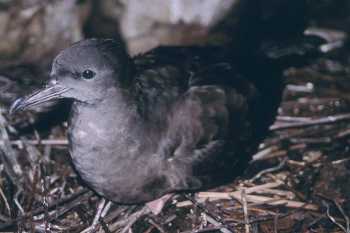Australia has the third largest marine estate of any nation in the World, extending from the tropical seas of the north to the sub-Antarctic waters of the Southern Ocean. This month the area of Australian waters under protection has been greatly increased (click here), notably by the declaration of the Coral Sea Commonwealth Marine Reserve with an area of 989 842 km2 (click here for a map of the new reserves).
The new Coral Sea Commonwealth Marine Reserve encompasses the former Coral Sea Conservation Zone, former Coringa-Herald National Nature Reserve and former Lihou Reef National Nature Reserve. Both the Coringa-Herald and Lihou Reef former NNRs support breeding Wedge-tailed Shearwaters Puffinus pacificus, a species that has been identified as a potential candidate for listing within the Albatross and Petrel Agreement, along with a number of other tropical seabirds.

Wedge-tailed Shearwater. Photograph by Alan Burger
Regular monitoring of seabirds on East Herald Cay in Coringa-Herald NNR has been undertaken since 1992, with counts of Wedge-tailed Shearwater burrow entrances along transects being made since 2001. Wedge-tailed Shearwaters have also been reported breeding on other islands and islets in the Coral Sea that now fall within the new marine reserve, including Cato Island, Bird Islet, Long Island, the Avon Isles, Loop Islet and the Chesterfield Reefs.
The process to produce a Management Plan for the Coral Sea Commonwealth Marine Reserve has commenced (click here). The Commonwealth marine reserves declared in November 2012 are under transitional arrangements until the new management plans come into effect in July 2014 (click here). Meanwhile the existing management plan for the two former Coral Sea NNRs will continue to apply.
To view photos of Wedge-tailed Shearwaters in the Coral Sea click here.
With thanks to Barry Baker for information.
Reference:
Bourne, W.R.P., David, A.C.F. & McAllan, I A.W. 2005. The birds of the southern Coral Sea including observations by HMS Herald in 1858‑60. Atoll Research Bulletin 541: 238-263.
John Cooper, ACAP Information Officer, 23 November 2012

 English
English  Français
Français  Español
Español